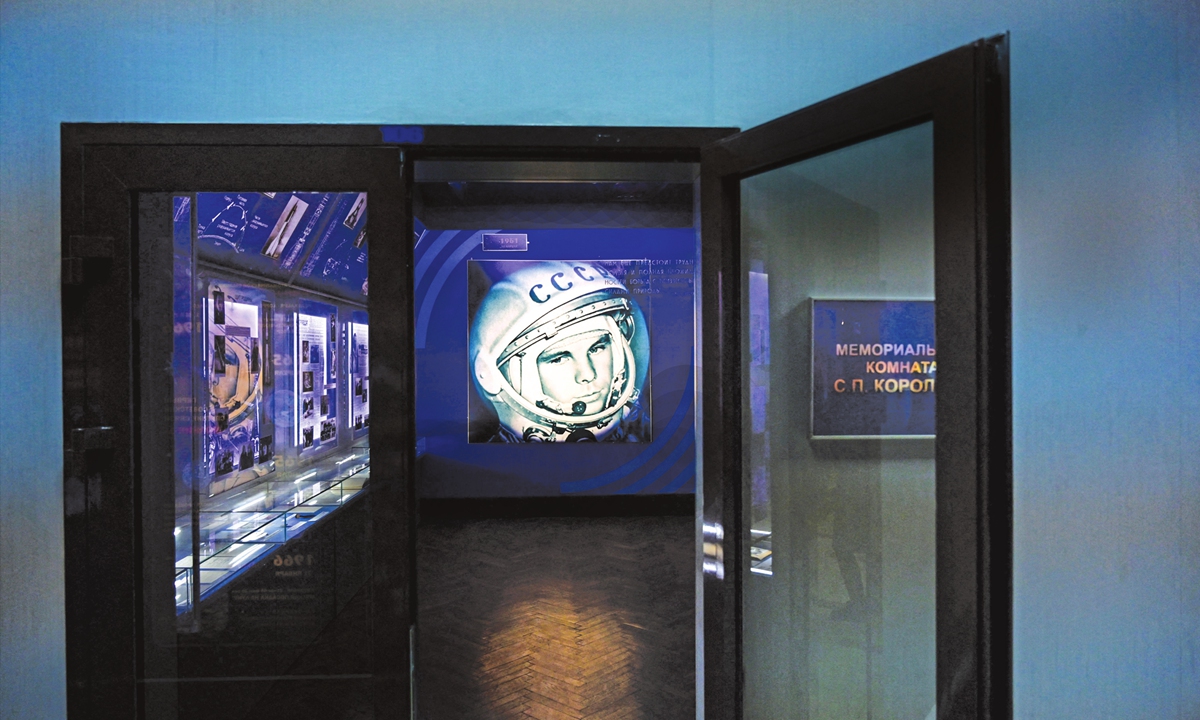Sixty years after he became the first person in space, there are few figures more universally admired in Russia today than Soviet cosmonaut Yuri Gagarin.

Graffiti with the image of Yuri Gagarin occupying the entire end wall of a multistory residential building, is seen in Odintsovo, Moscow region, Russia, on Sunday. Photo: AFP
His smiling face adorns murals across the country. He stands, arms at his sides as if zooming into space, on a pedestal 42.5 meters above the traffic flowing on Moscow's Leninsky Avenue. He is even a favorite subject for tattoos.
The Soviet Union may be gone and Russia's glory days in space long behind it, but Gagarin's legend lives on, a symbol of Russian success and - for a Kremlin keen to inspire patriotic fervor - an important source of national pride.
"He is a figure who inspires an absolute consensus that unifies the country," said Gagarin's biographer Lev Danilkin.
"This is a very rare case in which the vast majority of the population is unanimous."
The anniversary of Gagarin's historic flight on April 12, 1961 - celebrated every year in Russia as Cosmonautics Day - sees Russians of all ages lay flowers at monuments to his accomplishment across the country.
The enduring fascination comes not only from his story of rising from humble origins to become a space pioneer, or even the mystery surrounding his death.
Gagarin, said historian Alexander Zheleznyakov, was a figure who helped fuel the imagination.
"He transformed us from a simple biological species to one that could imagine an entire universe beyond Earth."
Humble beginnings The son of a carpenter and a dairy farmer who lived through the Nazi occupation, Gagarin trained as a steelworker before becoming a military pilot and then, at age 27, spending 108 minutes in space as his Vostok spacecraft completed one revolution around the Earth.
He was lauded for his bravery and professionalism, an example of the perfect Soviet man, but his legend was also imbued with tales of camaraderie, courage, and love for his two daughters and wife Valentina Gagarina.
Long a secret, Gagarin wrote his wife a poignant farewell letter in the event that he died during his mission.
"If something goes wrong, I ask you - especially you - Valyusha, not to die of grief. For this is how life goes," he wrote, using the diminutive for Valentina.
In an interview with AFP in 2011, cosmonaut Boris Volynov recalled a man who, despite sharing privileges of the Soviet elite, spent hours on the phone to procure medicine or secure a spot in a hospital for his less well-off friends.
On his return to Earth, Gagarin found himself at the center of a propaganda campaign on the superiority of the Soviet model.
Biographer Danilkin said Gagarin was used by authorities as an example to the rest of the world, but also to convince Soviet citizens, who had endured World War II and Stalin-era repressions, "that the sacrifices of the previous decades were not in vain."
President Vladimir Putin, he said, has co-opted that legacy to cement his own hold on power, promoting Soviet victories to encourage support for his 20-year rule.
"The current authorities methodically appropriate popular cults: first that of victory during World War II, then the conquest of space," Danilkin said.
Tragic hero Like all great Russian heroes, Gagarin is a tragic figure.
His death during a training flight in 1968 at the age of 34 remains a mystery because authorities never released the full report of the investigation into the causes of the accident.
Partial records suggest his MiG-15 fighter jet collided with a weather balloon, but in the absence of transparency, alternative theories abound. One holds that Gagarin was drunk at the controls; another that he was eliminated by the Kremlin which feared his popularity.
More than 40 years later, many Russians have yet to come to terms with his death.
"How could the top cosmonaut, such a young and kind man, die like that so suddenly?" said historian Zheleznyakov.
"People are still trying to get over it."
Four things to know about Gagarin's journey to space

An image of Soviet cosmonaut Yuri Gagarin is pictured at the museum of Russia's leading rocket-space enterprise RSC Energia in Korolyov outside Moscow, Russia, on March 17. Photo: AFP
'Let's go!' A trained-steelworker-turned military pilot, Gagarin was selected from thousands of candidates to undergo the rigorous training required for a space flight.
Apart from showing excellent results in his tests, Gagarin, then aged 27, also reportedly stood out by removing his shoes before entering the
Vostok spacecraft designated for the mission, a custom in Russia when entering a home.
On April 12, 1961, as Gagarin's flight took off from the Baikonur spaceport in Kazakhstan, he exclaimed his iconic catchphrase "
Poekhali!" or "Let's go!" in Russian.
Risky businessThe flight lasted just 108 minutes as the
Vostok completed one loop around the Earth.
Once Gagarin safely returned home, the success of his mission outshone the fact that not everything went according to plan. Among a dozen technical glitches, his spacecraft entered into orbit at a higher altitude than expected.
If its brakes system had malfunctioned, Gagarin would have had to wait for the spacecraft to begin descending on its own. And while the Vostok was stocked with enough food, water and oxygen to last 10 days, the higher altitude meant the wait would have been much longer and Gagarin would have run out of supplies. Luckily the brakes worked.
Spy suspicions Gagarin came down miles away from his expected landing point, ejecting from his capsule over the Saratov region in southern Russia. He landed in a field where the first people he saw were a young girl and her grandmother harvesting potatoes.
Clad in a white helmet and orange spacesuit, he struggled at first to convince them amid Cold War tensions that he was not a foreign spy.
The man behind GagarinWhile Gagarin became a household name in the Soviet Union, for years nobody knew about the mastermind of the country's space program: Sergei Korolyov.
The Soviets even rejected a Nobel Prize awarded to their "Chief Designer," determined to keep his identity a secret. Only after his death in 1966 was his name revealed.





